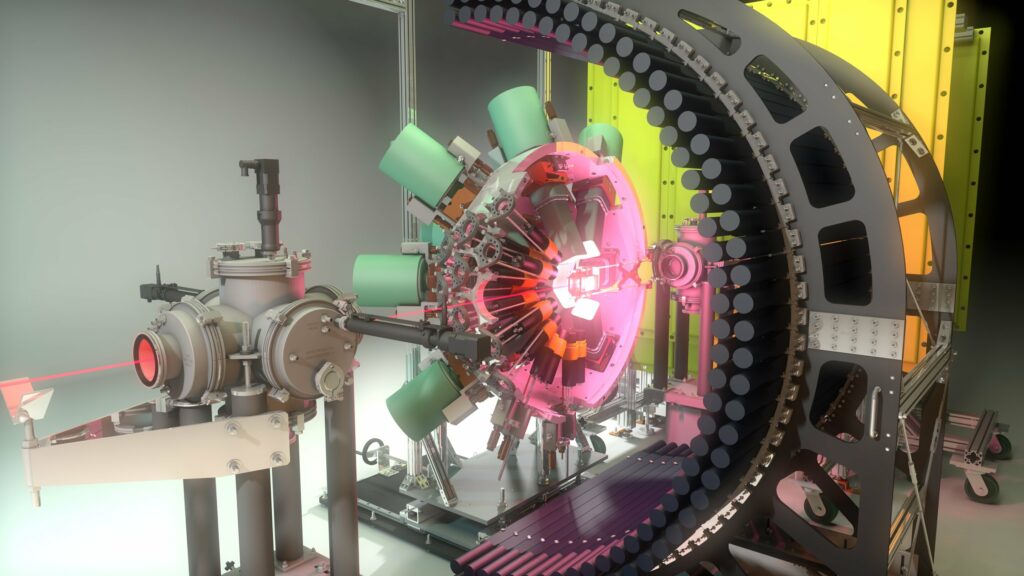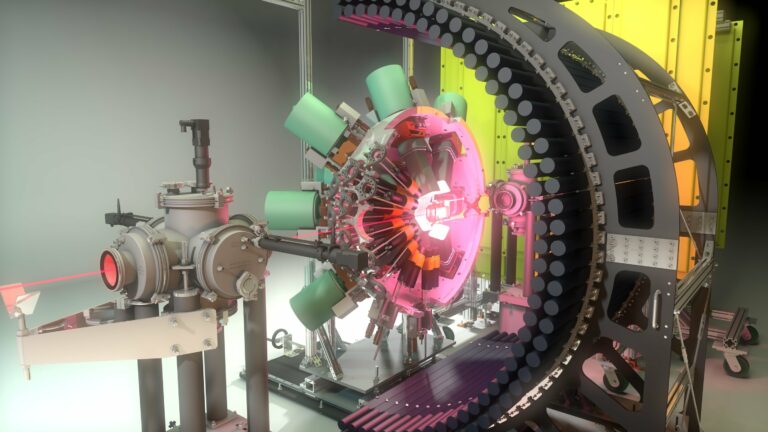Persistent Quantum State Indicates a Path towards Unraveling a Enigma in Radioactive Nuclei
Timothy Gray, from the Department of Energy’s Oak Ridge National Laboratory, spearheaded a study that may have disclosed an unforeseen alteration in the configuration of an atomic nucleus. This surprising revelation has the potential to impact our comprehension of the forces binding nuclei, the dynamics between protons and neutrons, and the processes governing the formation of elements.
“We employed radioactive beams of excited sodium-32 nuclei to scrutinize our understanding of nuclear shapes in regions far from stability, unearthing an unexpected outcome that raises inquiries about the evolution of nuclear shapes,” stated Gray, a nuclear physicist. The findings have been documented in Physical Review Letters. Atomic nuclei can undergo shifts in shapes and energies over time, transitioning between various configurations.
Typically, nuclei exist as quantum entities displaying either spherical or deformed shapes—resembling basketballs and American footballs, respectively. The connection between shapes and energy levels remains a significant unresolved question within the scientific community. Nuclear structure models encounter challenges when extending predictions to regions with limited experimental data. In the case of certain exotic radioactive nuclei, the shapes anticipated by conventional models contradict the observed configurations. Radioactive nuclei, expected to exhibit spherical forms in their lowest-energy states, surprisingly exhibit deformities.

What can turn a quantum state on its head?
In principle, the energy of an excited deformed state can fall below that of a spherical ground state, rendering the spherical shape the higher-energy configuration. Surprisingly, this role reversal seems to occur in certain exotic nuclei when the natural neutron-to-proton ratio becomes imbalanced. Strikingly, the excited spherical states post-reversal have never been identified, suggesting that once the ground state adopts a deformed shape, all subsequent excited states follow suit.
While numerous examples exist of nuclei with spherical ground states and deformed excited states, and vice versa, those with both deformed ground states and spherical excited states are notably rare. The study, led by Timothy Gray and involving 66 participants from 20 institutions, utilized data collected in 2022 from the Facility for Rare Isotope Beams (FRIB) at Michigan State University. The team discovered a long-lived excited state of radioactive sodium-32 with an unusually extended lifetime of 24 microseconds—a million times longer than a typical nuclear excited state.
These enduring excited states, known as isomers, suggest unexpected processes. For instance, if the excited state is spherical, the challenge of returning to a deformed ground state could explain its prolonged existence. The experiment employed the FRIB Decay Station initiator (FDSi), a highly sensitive modular multidetector system. The excited sodium-32 nuclei were stopped in the detector and decayed to the deformed ground state by emitting gamma rays. The isomer’s 24-microsecond existence, the longest among isomers with 20 to 28 neutrons that decay by gamma-ray emission, was observed in approximately 1.8% of sodium-32 nuclei.
To ascertain the nature of the excited state—whether it is spherical or deformed—an experiment with higher beam power is essential. This upgrade to FRIB will provide increased beam intensity, enabling the team to distinguish between the two possibilities by analyzing correlations between the angles of emitted gamma rays in a cascade. “We’d characterize correlations between the angles of two gamma rays that are emitted in a cascade,” explains Gray. “The two possibilities have very different angular correlations between the gamma rays. If we have enough statistics, we could disentangle the pattern that reveals a clear answer.”
This article is republished from PhysORG under a Creative Commons license. Read the original article.
Do not forget to share your opinion with us to provide you with the best posts !




0 Comments